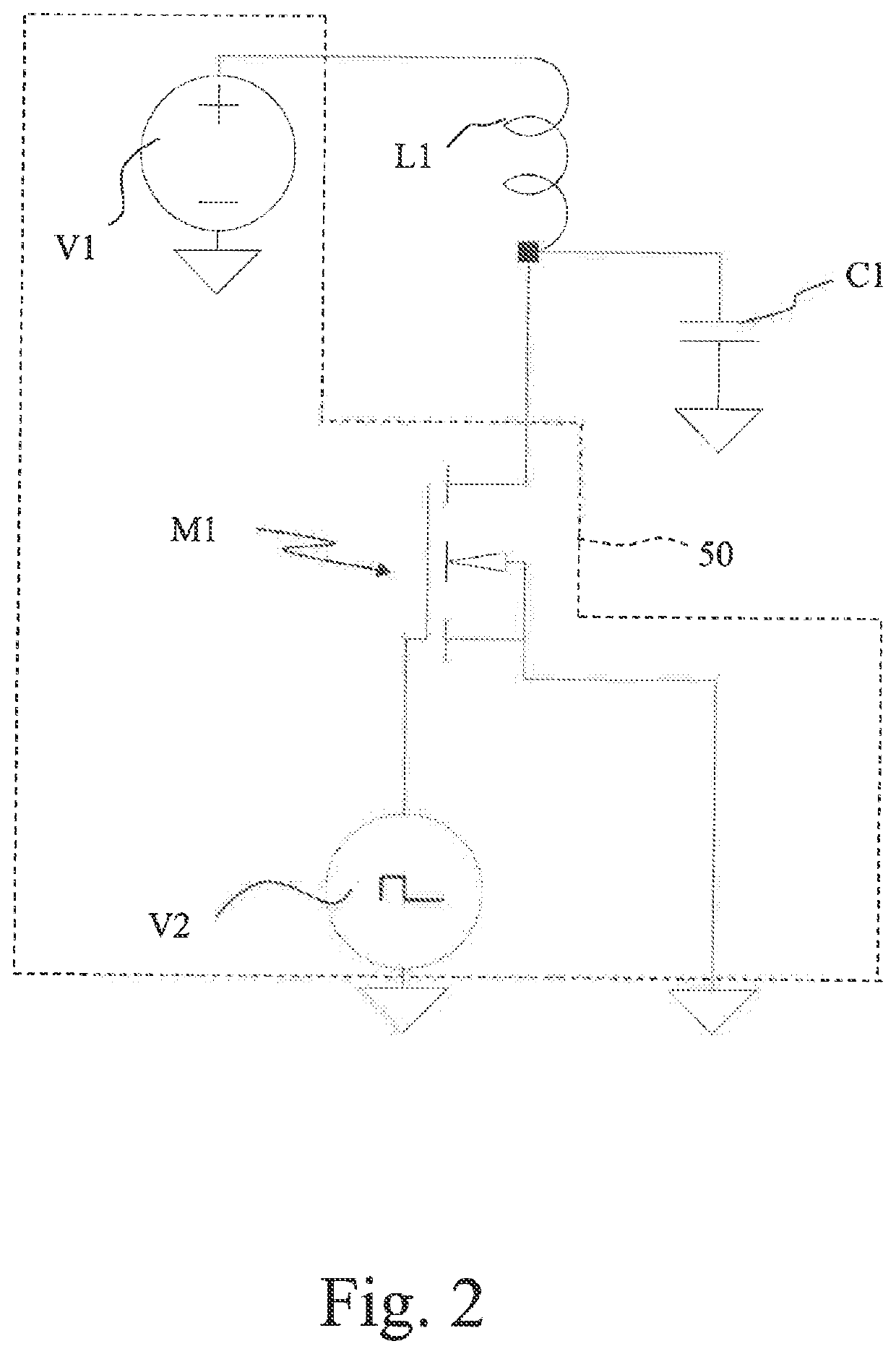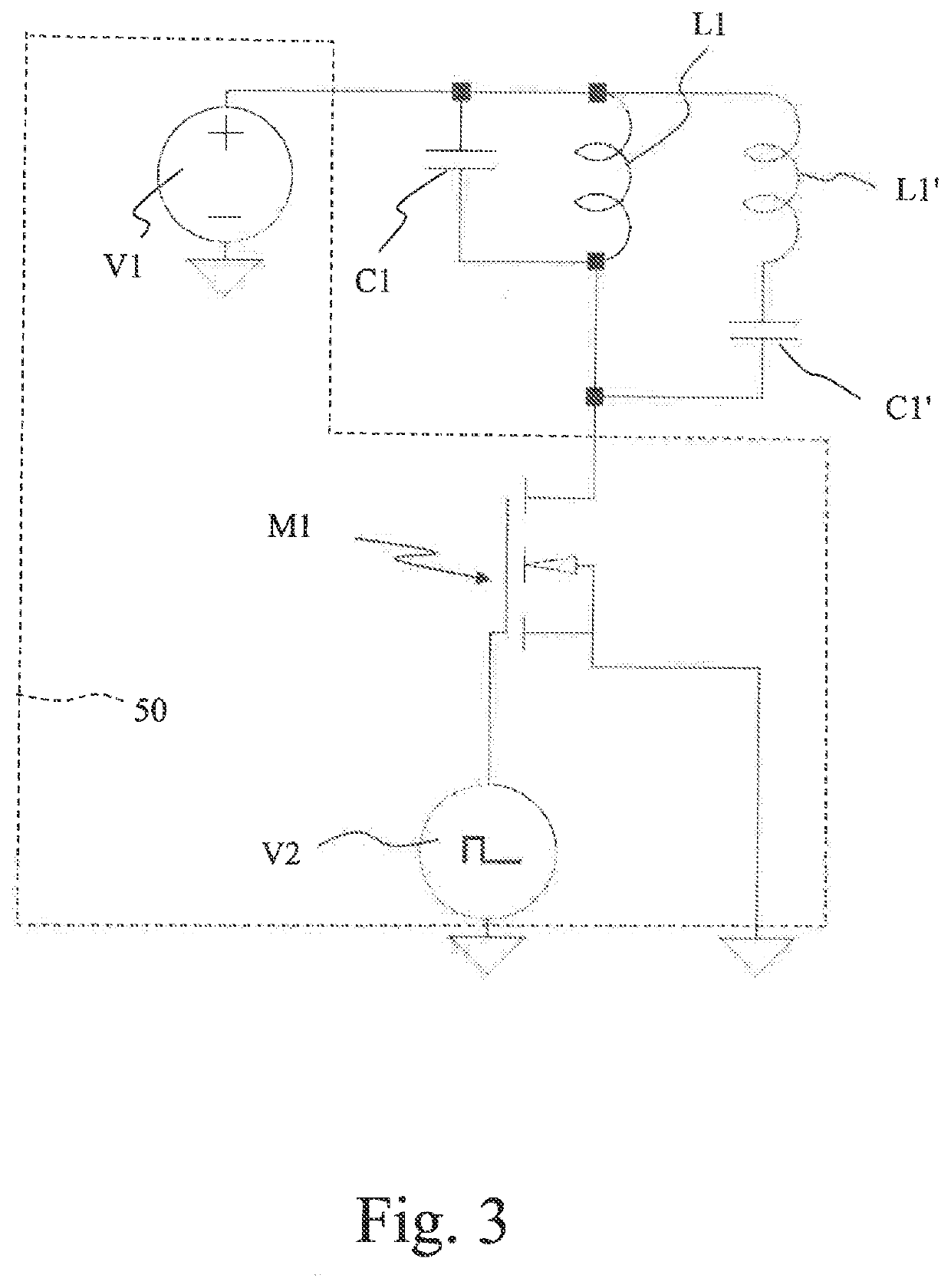Device and process for the production and transfer of heating and cooling power
a technology of heating and cooling power and process, which is applied in the direction of fixed capacitor details, machine operation mode, lighting and heating apparatus, etc., can solve problems such as inability to use, and achieve the effect of reducing the power required
- Summary
- Abstract
- Description
- Claims
- Application Information
AI Technical Summary
Benefits of technology
Problems solved by technology
Method used
Image
Examples
example 1
ation of a Prototype of Heating Element
[0081]A prototype of flat capacitor having the dielectric made up of two layers close to each other and adhering to the plates has been implemented. The first dielectric was a terpolymer PVDF-TrFE-CTFE (electrocaloric material), whereas the second layer was constituted by air. Thus, the equivalent diagram is that of two capacitors connected in series, as depicted in FIG. 13.
[0082]The characteristics of the dielectric terpolymer were as follows:
[0083]Side=0.03×0.03 m
[0084]Surface S=0.0009 m2
[0085]Thickness of the PVDF-TrFE-CTFE film=10 μm
[0086]Taking into account the dielectric constant in the vacuum (ε0=8.854*10−12 F / m), the values of the capacitances C1 (terpolymer) and C2 (air) were calculated.
[0087]The value of C1 was calculated as follows:
Relative permittivity of the terpolymer εr1=37
ε1=327.6*10−12 F / m=εr1×ε0
C1=29.480*10−12 F(ε1*Surface / Thickness)
[0088]The value of C2 was in turn calculated as follows:
Air thickness=4.23 μm
Relative permitt...
example 2
tal Tests
[0090]The capacitor made according to the example has been connected in parallel to an inductor, as in the circuit of FIG. 1.
[0091]A sinusoidal voltage with a working frequency of 87,600 Hz (87.6 kHz) and effective value of the voltage of 200 Vrms was selected to be set in the circuit.
[0092]Once the total capacitance of the capacitor is known, the inductance value that satisfies the relation with the working frequency of 87.6 kHz was calculated to be 1.86 mH.
[0093]The heat generated by the PVDF-TrFE-CTFE film was compared with the heat generated by an electrical resistance of 220Ω powered at 22.69 volts and a current absorption of 0.103136 A.
[0094]As the temperature of the two systems reached 50° C., it was possible to calculate the thermal power generated by the electrocaloric film by detecting the electric power consumed by the resistor, equal to 2.34 W.
[0095]The power shares absorbed by each part of the capacitor prototype of Example 1 were calculated by taking into acco...
PUM
 Login to View More
Login to View More Abstract
Description
Claims
Application Information
 Login to View More
Login to View More - R&D
- Intellectual Property
- Life Sciences
- Materials
- Tech Scout
- Unparalleled Data Quality
- Higher Quality Content
- 60% Fewer Hallucinations
Browse by: Latest US Patents, China's latest patents, Technical Efficacy Thesaurus, Application Domain, Technology Topic, Popular Technical Reports.
© 2025 PatSnap. All rights reserved.Legal|Privacy policy|Modern Slavery Act Transparency Statement|Sitemap|About US| Contact US: help@patsnap.com



